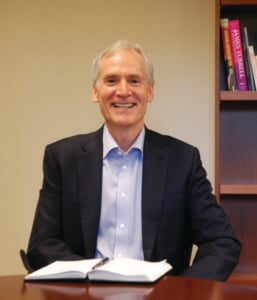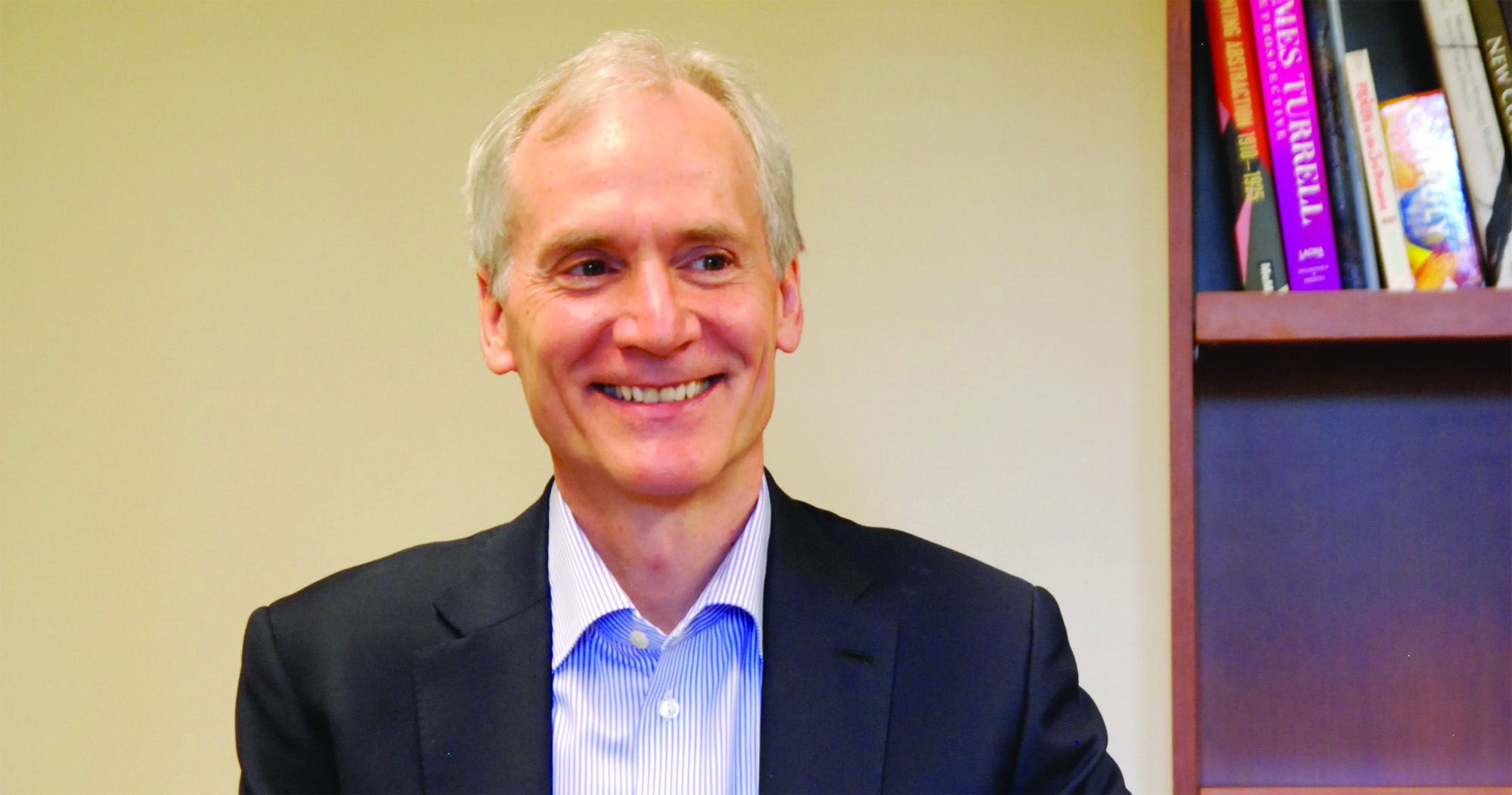
The Daily spoke with Tessier-Lavigne about his first weeks on the job and his vision for Stanford. Above all, the new president said, he’s eager to hear from the University community –- so eager that he asked to “hijack” the last 10 minutes of the interview to grill Daily staff on how they would improve Stanford and their advice to him as he begins his new role.
The Stanford Daily (TSD): You’ve been in office for about two weeks now. What have you been up to?
Marc Tessier-Lavigne (MTL): In my first few months here, I plan to spend a lot of time listening and learning. I think it’s important for any leader, and it’s especially important for a leader coming from outside the institution. I have some familiarity with Stanford but it’s dated. And, moreover, when I was here I had a much [narrower] focus.
We’ve been setting up, through the fall quarter, visits to the student dorms, trying to hit as many as possible — starting with the freshman dorms but [beyond the fall] trying to get to every dorm. I’m told what works well is coming for dinner-time or for dessert for conversation. It will enable me to meet a very broad cross section of students … [Then meeting] with specific groups, that’s something I’d like to do as well, as particular focus will be on meeting with students who feel marginalized.
There are a lot of people to meet, and we’ve been trying to do that in an organized fashion — to start reaching out. On the student side, I had a first meeting last week with the ASSU leadership. We talked about the issues that are front and center for them, and it was in my view a really productive meeting. We started a dialogue and we’re going to be meeting regularly.
TSD: What did you discuss?
MTL: [ASSU’s priorities] are very clear … at the very top is sexual assault and tackling that. Other issues they’re focused on … include the [building] renaming issue, diversity in the major and looking at student representation on committees — and just generally, communication between the students and the administration.
TSD: What are your priorities heading into this year?
MTL: Working with the communities, the faculty, the staff and the students to ensure excellence across all of the disciplines. Reaffirming the value and the importance of a liberal education … Ensuring access. That’s been a priority of the previous administration over 16 years and it’s very important to me personally, as the first member of my immediate family to go to college. Ensuring, also, inclusion: that we have a diverse culture where no one feel marginalized.
There are a number of other issues. Financial pressure continues to mount, both because of the constraints on funding of research and the rocky economic circumstances. So [I want to make] sure that financially we maintain the university in a strong position. And also, as you probably know, we’re going to be working on planning our long-range land-use needs.
[…]
The other important priority right now for me — probably one of the most important decisions I’ll have to make in the near term — is the appointment of a new provost. As you know, we assembled an advisory committee on the selection of the provost starting in April … I’ve met with all the committee members now for their recommendations. They’ve come forward with a wonderful slate of candidates. I asked for them all to be internal. I also asked the committee to be very mindful of diversity in the selection of the provost … And over the next few months I’ll be able to dig down into that with the aim of naming someone in the first half of November at the latest.
TSD: What are you looking for in the new provost?
MTL: The provost’s job is an extraordinary job and it has many dimensions. It’s focused on students and the academic. It’s focused on university life. The provost is also the chief budgetary officer … We’re very fortunate at Stanford that the provost position is organized this way because that person can bring together the entire community … This person has to be a partner. I think one of the strengths of the government system at Stanford is this partnership between the president and the provost, and they work together as a team. We have to be able to finish each other’s sentences, if you will.
TSD: I’m sure you’re aware of some previous buzz on campus surrounding the fact that you are Stanford’s 11th straight, white and male president. I think many people will be looking to your actions on topics of diversity. What experience do you have with that issue?
MTL: When I joined Rockefeller, one of the things that struck me immediately was a poor track record of diversity on the faculty. In terms of the student body, we’ve done much better … When I arrived, the faculty diversity was really quite shocking. I did my first town hall a month after I arrived, and I sort of planted a flag and said we’re going to focus on this issue. We have to do better.
In the first few years, we thought we were making the right moves, but somehow that wasn’t translating into moving the needle … And we realized that we had to take more deliberate steps, [including] really focusing on the pool of applicants. Previously Rockefeller just put an ad out: Are you interested? Please apply. And we found out that a lot of qualified candidates weren’t applying because they had preconceptions about the university … So we started doing aggressive outreach to colleagues around the country, asking them: Who are your best postdocs? Tell us about the women; tell us about the underrepresented minorities in your departments and labs … We decided to do Skype interviews as a first step, and we were able to double the number of candidates that we spoke to and thereby reach a much more diverse group of people … We had unconscious bias training for interviewers — we learned about the social science behind that … The pool of people we selected for [visits was] actually more diverse than the applicant pool.
You can’t change the composition of faculty overnight. It will take decades to see things change completely. That doesn’t mean you can’t have that momentum and feel it. You get a real sense that things are changing.
TSD: Many people know you as a scientist, but you studied both philosophy and physiology while you were a Rhodes Scholar at Oxford. Do you have a humanities side, then?
MTL: I loved philosophy. I actually considered, for a while, doing graduate work in philosophy rather than in science. Growing up I thought I’d be a scientist. I loved mathematics and physics, and I ended up concentrating in physics as an undergraduate, with a lot of math. But what I like is solving problems. I love scientific problems. I love nonscientific problems. I think that’s what I discovered through philosophy. Or solving puzzles, if you will — a puzzle like, how do we increase the diversity at Rockefeller campus given the pipeline issue in STEM?
In the end, neuroscience really seemed to me to have just a wonderful blend of science and also a connection to the bigger questions — How does the mind work? What is consciousness? — all of the human dimensions that can be illuminated through scientific and nonscientific activity. [And] history reading is my hobby.
TSD: Any fun facts about yourself?
MTL: I’d say my family’s really important to me.
TSD: And your daughter is coming to Stanford this year as a freshman. How does she feel about having you follow her over here?
MTL: Well, you don’t typically bring your parents with you to college. She applied early to Stanford … got in … and then I was approached about this job. That gave her pause.
Contact Hannah Knowles at hknowles ‘at’ stanford.edu.
